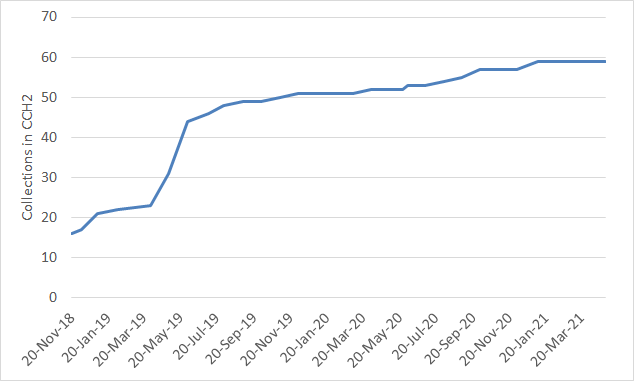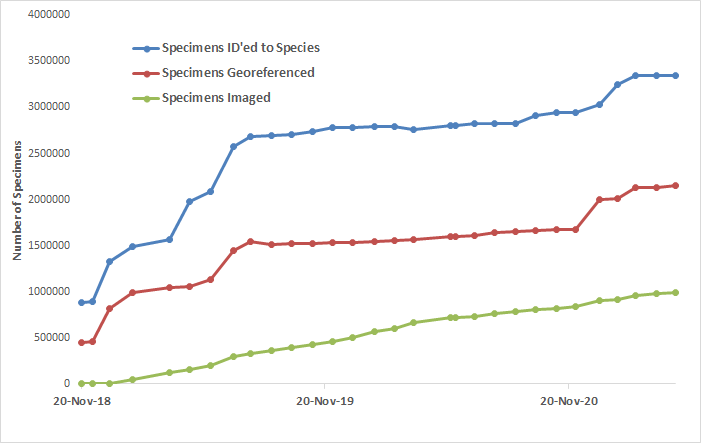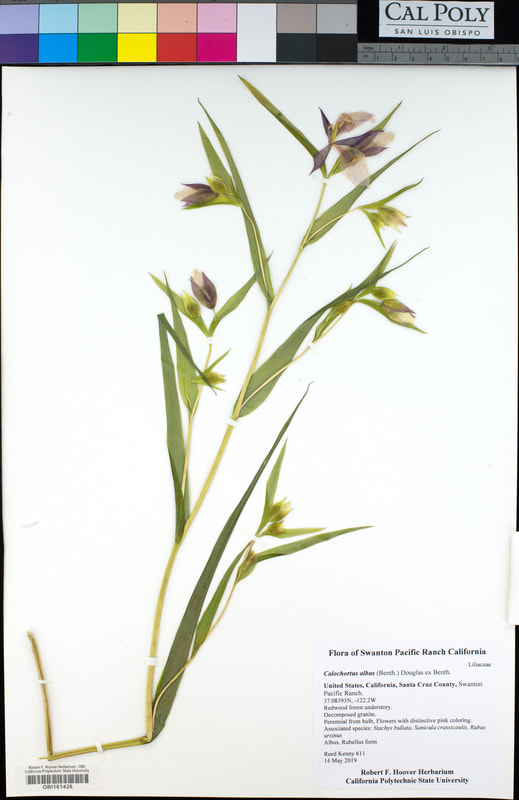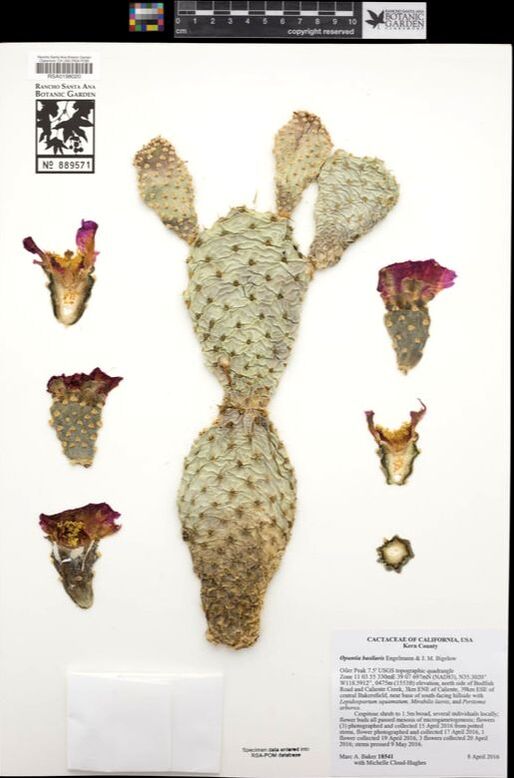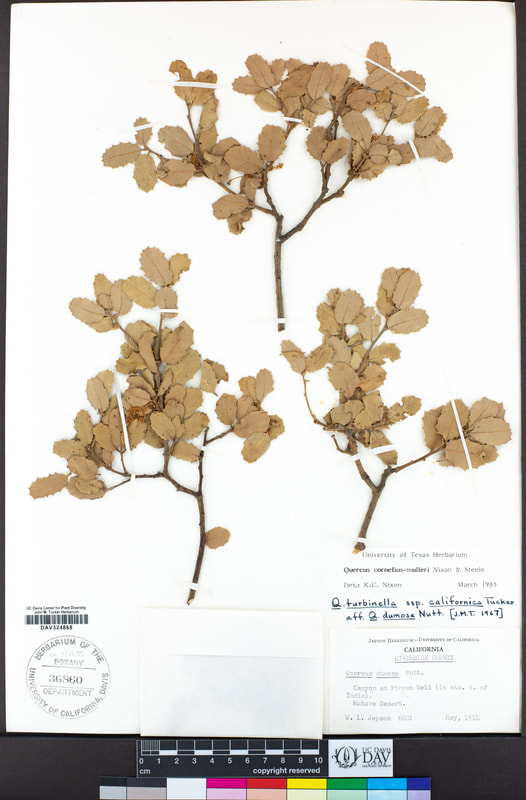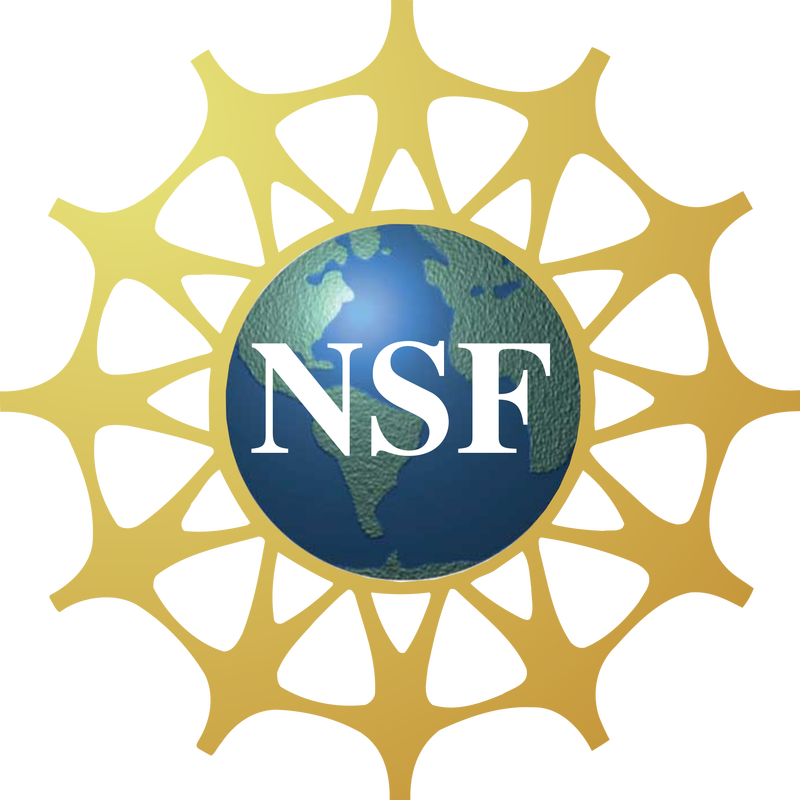With the end of each academic year, we in the CAP Network often find ourselves reflecting: what have we accomplished? How have we grown? We are happy to share this reflection with you, the community that has supported us and helped us get things done. There is yet much to do, but look how far we've come!
The CCH2 portal has grown from fewer than 20 collections to a massive network of 59!
These collections come in many shapes and sizes, from the small, localized Sagehen Creek Field Station (just over 1,800 specimens) to the massive holdings of the Jepson and University Herbaria at UC Berkeley (over 560,000 digitized vascular plant records to date). Thirty-three CCH2 collections (56%) contain fewer than 10,000 digitized specimens, and eight (14%) consist of fewer than 1,000! Although smaller in size, these herbaria are vital sources of often unique, specialized collections that document specific regions or the activities of lesser-known collectors. They fill critical gaps in our understanding of these special places (Monfils et al. 2020), yet are often in greater peril of shutting down due to lack of funding or attention. The infrastructure and community bolstered by the CAP Network and the Consortium of California Herbaria may help these smaller collections gain the recognition and help they deserve.
CCH2 has grown to include digital data for over 3 million specimens.
Perhaps the most obvious metric of CCH success is the sheer number of herbarium specimens now digitized and available in our data portal. Many herbarium collections were never previously digitized or had never made their data public, resulting in data silos and massive unrealized potential. Now researchers and the public have access to 3.1 million herbarium specimen records of over 82,000 species across the world, and these numbers continue to grow each day.
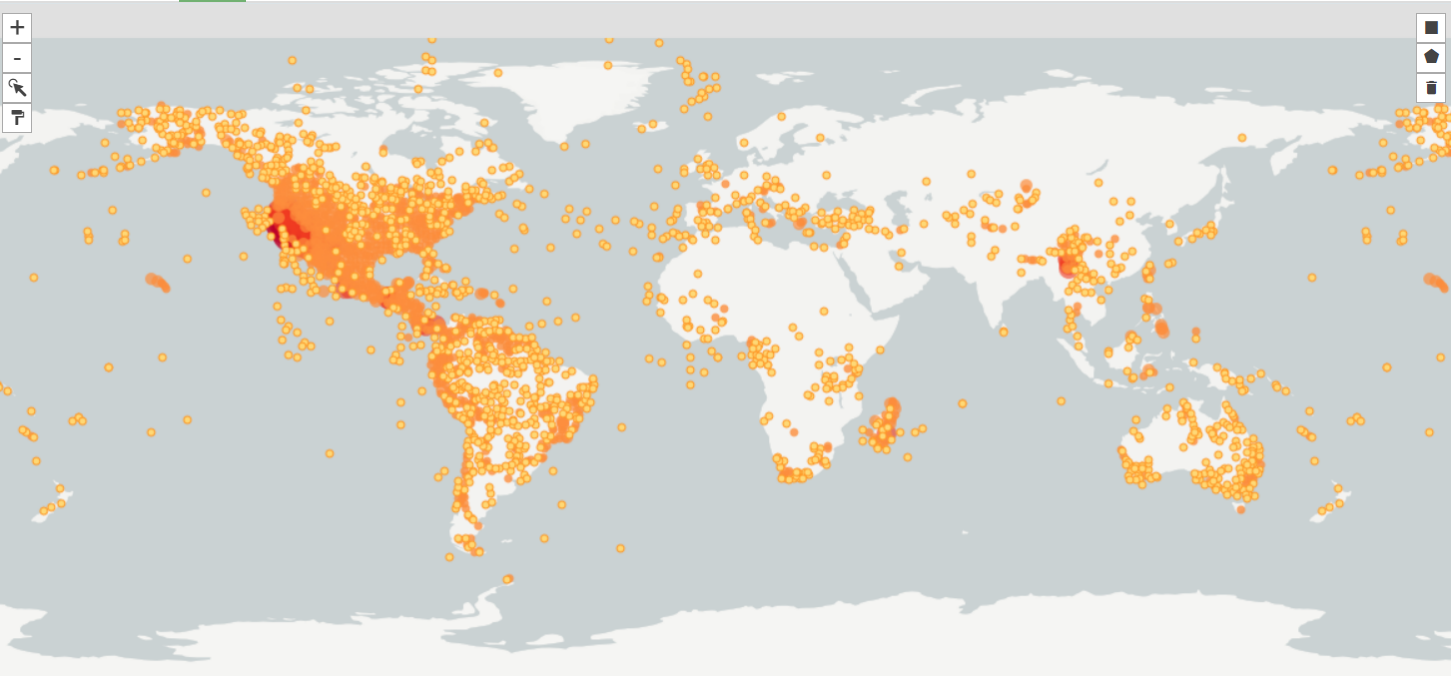
Distribution of CCH specimens in GBIF
We started at zero, but now we're up to nearly 1 million images!
Imaging specimens has been one of the most urgent goals of the CAP Network. With funding from this NSF grant, we purchased and assembled 17 imaging stations across the state. Not only can these critical tools be used to digitize the historic holdings of collections, but herbaria can now fold digitization into their accessioning pipelines, meaning that present and future specimen data will enter the public sphere more rapidly after collection. Indeed, we currently have over 550 records from 2021!
Images of physical specimens have the potential to unlock new discoveries as researchers can now view specimens across institutions side-by-side and measure individual specimens' traits. Broader communities across California and all over the world can now use specimen images to learn how to identify plants, where plants occur, and differences among plant populations. Specimen images are a huge and compelling resource for science and society, connecting us to the living things we find in our daily lives. We're excited for another year of advancing and enhancing this resource...and hopefully long into the future!
References
- Monfils AK, Krimmel ER, Bates JM, Bauer JE, Belitz MW, Cahill BC, Caywood AM, Cobb NS, Colby JB, Ellis SA, Krejsa DM, Levine TD, Marsico TD, Mayfield-Meyer TJ, Miller-Camp JM, Nelson GM, Phillips MA, Revelez MA, Roberts DR, Singer RA, Zaspel JM. 2020. Regional collections are an essential component of biodiversity research infrastructure. BioScience 70(12):1045-1047. https://doi.org/10.1093/biosci/biaa102
